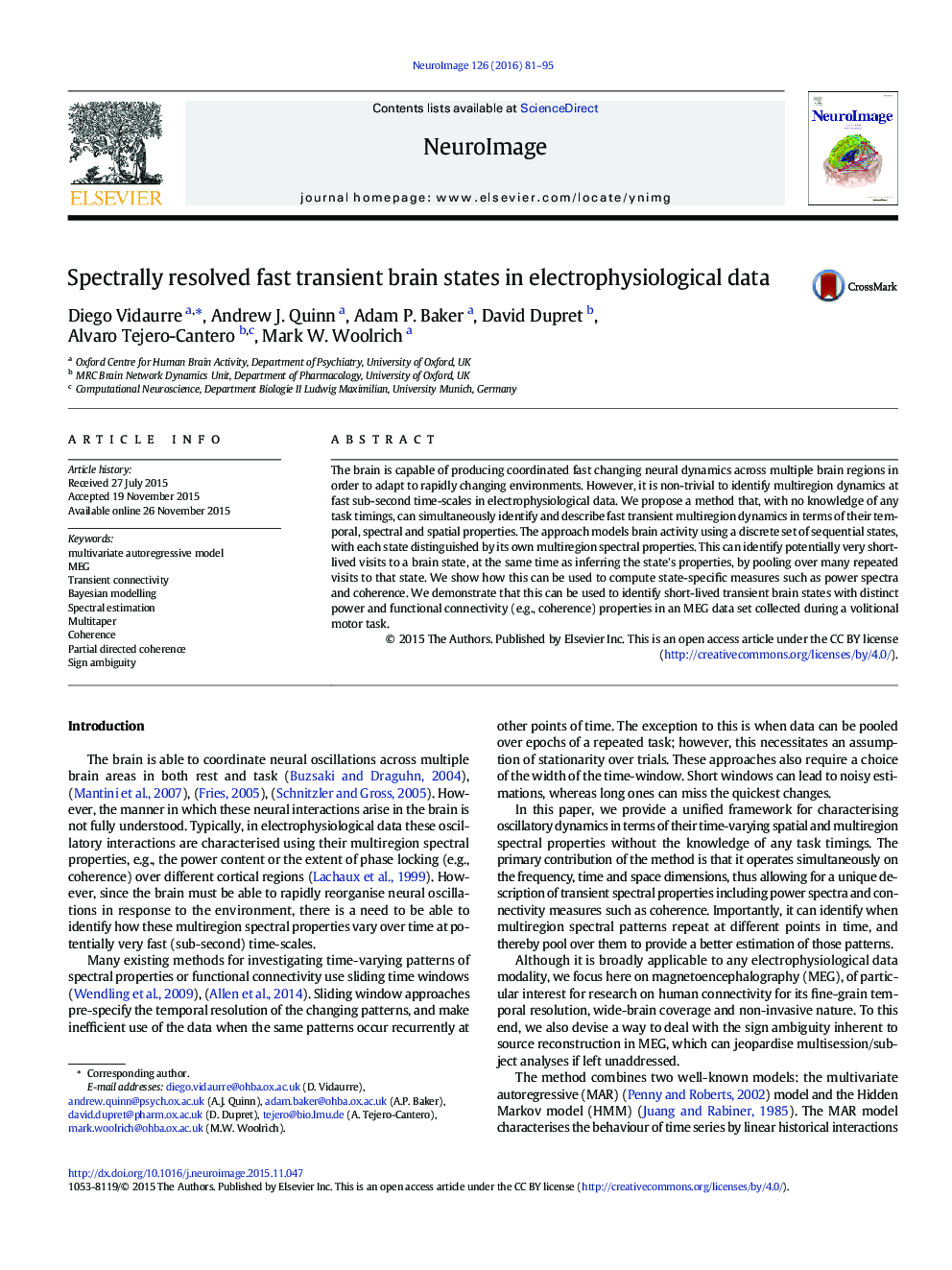| Article ID | Journal | Published Year | Pages | File Type |
|---|---|---|---|---|
| 6023891 | NeuroImage | 2016 | 15 Pages |
â¢We identify short-lived recurrent transient brain states of distinct multi-region spectral propertiesâ¢The method can be used to find time periods of quasi-stationary power spectra and phase lockingâ¢The method can be used to produce denoised, task-locked time-frequency maps of power and coherenceâ¢The approach is broadly applicable to any electrophysiological data in rest or task
The brain is capable of producing coordinated fast changing neural dynamics across multiple brain regions in order to adapt to rapidly changing environments. However, it is non-trivial to identify multiregion dynamics at fast sub-second time-scales in electrophysiological data. We propose a method that, with no knowledge of any task timings, can simultaneously identify and describe fast transient multiregion dynamics in terms of their temporal, spectral and spatial properties. The approach models brain activity using a discrete set of sequential states, with each state distinguished by its own multiregion spectral properties. This can identify potentially very short-lived visits to a brain state, at the same time as inferring the state's properties, by pooling over many repeated visits to that state. We show how this can be used to compute state-specific measures such as power spectra and coherence. We demonstrate that this can be used to identify short-lived transient brain states with distinct power and functional connectivity (e.g., coherence) properties in an MEG data set collected during a volitional motor task.
